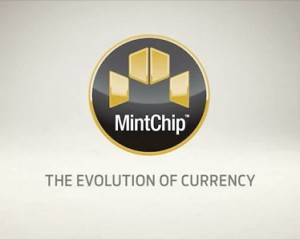Disrupting the Bankers

Typical banker.
When I need a ride, I no longer call a dispatcher. Rather, I call a driver directly, using a service like Lyft or Uber. When I want to watch a TV show, I no longer tune in to a local TV station and wait for them to show it. Instead, I just stream it to my computer.
In short, I’ve eliminated the middleman. The process is called disintermediation – I’ve eliminated the intermediary. We see it happening in publishing, lodging, ride sharing, television, even in adultery.
So what about banking?
Traditionally, banks are trusted intermediaries that allow us to conduct business with strangers. You buy something from me and I want to be paid. You give me some token of value. Can I trust you? Maybe not. So I turn to the banking system. Your bank can verify that you have the necessary funds on deposit. My bank can verify that your bank will actually transfer those funds to my account. It’s a valuable service and banks charge a significant fee for it.
As intermediaries, banks are subject to disintermediation. If we can eliminate them, we can create a simpler, cheaper, more efficient system. That’s the promise of Bitcoin, which uses an encrypted blockchain to enforce trust through software.
To date, Bitcoin’s fans include hipsters, drug dealers, terrorists, and libertarians — people who prefer anonymity and cash rather than credit. The fan club has given Bitcoin a seedy reputation. Mainstream financial institutions might well ask, With friends like those, who needs Bitcoin?
The short answer is: Anyone who can’t access a trustworthy banking system. As Jeremy Millar points out, that includes much of the third world. If you’re trying to run a business in, say, Greece or Argentina, you’ll encounter an array of financial obstacles, including currency controls and cross-border payment limitations. Your suppliers can’t trust that you will pay them promptly. Nor can you trust that your customers will. Since the banking system can’t supply a trusted intermediary, you turn to Bitcoin. According to Millar, Bitcoin will find a niche in the third world and expand from there. (If so, Bitcoin will closely follow Clayton Christensen’s model of disruptive innovation: 1) find a niche; 2) mature; 3) disrupt).
And who else might need Bitcoin? Well, the banks themselves. Bankers realize that they are likely to be disrupted. So why not disrupt themselves rather than waiting for someone else to do it for them?
That appears to be exactly what a Wall Street startup named R3 is planning to do. R3 doesn’t use Bitcoin per se but rather the cryptographic technology that underpins Bitcoin. In addition to the blockchain that identifies transactions, R3’s system uses distributed ledgers in a peer-to-peer (P2P) network. The system consists of many nodes that replicate information. (It’s similar to Napster). Since information is distributed across many nodes, there is no single point of failure. Since the nodes can be scattered around the world, no single government can control it. Since transactions are copied to multiple nodes, it’s also very hard to cook the books. The system builds trust through replication and encryption.
According to its latest press release, R3 has now signed up 42 major financial institutions. The list includes some very heavy hitters, including Banco Santander, Deutsche Bank, J.P. Morgan, Goldman Sachs, HSBC, Royal Bank of Canada, and SEB. The consortium is now building a technology platform that will allow members (and presumably non-members) to build global applications.
In essence, R3 plans to bring us a version of Bitcoin run by professional financiers rather than wild-eyed technology radicals. That’s not such a bad idea. But there’s also a darker side. If R3-like platforms succeed, the world’s financial system will be controlled by bankers rather than by governments. So we come back to a question of trust. Whom do you trust to run the global financial system: bankers or governments?
Bitcoin and Permissionless Innovation

It’s a platform.
When I started this website, I didn’t need to ask anyone’s permission. An enabling platform was already in place. The platform consisted of the Internet, the World Wide Web, and many pieces of open source software. All I needed to do was download the latest version of WordPress, rent some space on a web server, and I was off to the races.
The key element, of course, is an open, accessible platform that facilitates innovation. In my case, the platform is a collection of Internet-based technologies. Other permissionless innovation platforms include the interstate highway system, the human genome project, and the public school system. The trick is to provide a platform that anyone can use without prior permission.
I thought about this as I was reading up on Bitcoin. I’ve written about Bitcoin as a currency (here and here). One of my intrepid readers, John Ball, suggested that I’m probably missing the essence of what Bitcoin is all about. John, who understands the technology better than I do, suggests that Bitcoin is a permissionless innovation platform. Here’s what he has to say:
“… Bitcoin has little to do with currency, and everything to do with a protocol and trusted ledger. I suspect we may see multiple ‘digital currencies’ just as we see multiple email systems. However, the concept of peer to peer transactions freed from the tolls of large intermediaries like Visa, Western Union, and First Data, is here to stay and will continue to grow.” (John’s entire comment is here. Just scroll down.)
With Visa, Western Union, or First Data, we have to ask permission and pay fees to use their proprietary system. Similarly, in the early days of software, developers had to ask permission and pay fees to run their programs on proprietary computers. With the advent of open operating systems like Unix, software developers no longer had to ask permission. They simply wrote to the open software platform. As a result, software blossomed and hardware became a commodity.
As John suggests, the same thing seems to be happening in the world of crypto-currencies. John predicts that we’ll see multiple digital currencies. He’s right. In fact, it’s already happening. You can use another permissionless innovation platform called Google to find: Peercoin, Dogecoin, Namecoin, and others. As far as I can tell, all of these are built on the Bitcoin platform. If I had better programming skills, I could create my own currency. Let’s call it Travis Tender.
While Bitcoin (the currency) has certainly had some PR mishaps lately, Bitcoin (the platform) is just starting to blossom. In fact, we might say that Bitcoin is to currency as Unix is to proprietary computing. If so, we’re about to see a wave of innovation that will make the original Bitcoin seem quaint.
Thanks, John.
From Bitcoin to MintChip?

The present.
I first wrote about Bitcoin almost a year ago. At the time, they were selling for $105 each. I didn’t buy any because they had just surged in value and it seemed like a bubble that would surely burst. Today, they’re selling for $664. So much for my ability to forecast the world’s first virtual currency.
There’s a lot that I like about Bitcoins. Their value is based on supply and demand, not government fiat. They’re anonymous like cash but they’re easier to manage and harder to lose. I thought maybe they were theft-proof but I was wrong about that.
On the other hand, there are a lot of things not to like about Bitcoin. Like the fact that so much of the infrastructure is run by shady characters and incompetent (or malevolent) twenty somethings. One of the leading Bitcoin users went by the name Dread Pirate Roberts before he got busted. Bitcoin exchanges – including the largest, Mt. Gox — have been plundered, apparently through sheer incompetence. Just the other day, the Financial Times reported on the first “unnatural death” associated with the Bitcoin universe.
Yet, the price holds steady and shows no signs of returning to where it was a year ago. To be fair, the price skyrocketed to $1,151 in December and has fallen back since – so it was a bit of a bubble. But I would still be happy if I had bought a few Bitcoins at the time I wrote my first article.
And now – apparently – the originator of Bitcoin has been identified. The original Bitcoin manifesto and block of code was published by someone using the name Satoshi Nakamoto. The world assumed that this was a pseudonym and spent many sleepless hours trying to figure out who the “real” author was. Who could write such compact, elegant, and brilliant code? Now Newsweek claims to have found the author. His name is Satoshi Nakamoto, a toy train enthusiast who lives near Los Angeles. (Late breaking news — maybe he’s not the real guy after all).
So, what’s next? Bitcoin has whetted our appetites for a currency that’s not controlled by governments or banks. We seem to like a currency that’s transparent and based on the laws of supply and demand rather than politics. Now if we could just get rid of the crooks and fools.
So where to turn? Perhaps Canada. In 2012, the Royal Canadian Mint announced the MintChip project – a digital

The future?
currency that’s not quite the same as Bitcoin but similar. MintChip got a lot of press when the Canadian government launched the MintChip challenge to create an ecosystem of MintChip apps. The publicity died out quickly but as recently as September 2013, Marc Brûlé, the head of the project, said MintChip is still moving forward and hinted at a MintChip 2.0.
For me, the big differences between Bitcoin and MintChip are that MintChip is run by grownups and backed by a credible government. It has many of the advantages of Bitcoin but few of the disadvantages. After all, we all trust Canada don’t we?
Worried About the Euro? Try Bitcoin.

Got any bitcoins?
With the serial crises in the Euro zone, one has to wonder if the currency will survive. If it doesn’t, one assumes that individual countries will return to their national currencies: the drachma, lira, peseta, etc. But do they have to? Who says that a currency has to be sponsored by a national government?
That’s part of the theory behind Bitcoin, the most successful virtual currency in history. Bitcoins exist as highly encrypted computer transactions. The currency was created in 2009 by an extremely talented programmer (or programmers) using the pseudonym Satoshi Nakamoto. Roughly 31,000 lines of very tightly written code generate 2½ bitcoins per minute. (The rate will vary over time until 21 million bitcoins are produced). Bitcoin enthusiasts use high-powered servers to “mine” the bitcoins; they usually sell them on exchanges like Mt. Gox. The system uses the same servers to track transactions and ensure that no one person can spend the same bitcoin twice.
The bitcoin system uses peer-to-peer networking, meaning that there’s no central office or person or committee responsible for managing operations. That also means there’s no one to arrest if national authorities decide that the operation is illegal (which, so far, they haven’t). As Nakamoto pointed out in an early manifesto, today’s fiat currencies require us to trust national governments and central banks, which seem to regularly abuse that trust. The bitcoin, on the other hand, is based on “crypto proof instead of trust.” If you trust cryptography more than you trust central banks, the bitcoin is for you.
Bitcoins have all the advantages of cash, including anonymity. They also remove most of the disadvantages of cash: you can’t lose them, they (apparently) can’t be stolen, and they’re not bulky and hard to transfer. Because there’s no middle man, transaction costs are also very low. Anonymity and ease-of-use appeal to three significant demographics: libertarians, criminals, and those who predict the collapse of national currencies.
The never-ending euro crisis has driven bitcoins to new heights of popularity. There are now roughly 10.5 million bitcoins in circulation. Like a commodity, their price is governed by supply-and-demand. Since the Cyprus crisis erupted, their value has nearly tripled and they recently sold for about $105 each — meaning that the total value of bitcoins in circulation is now over $1 billion.
Their popularity has expanded in other ways as well. Search for “bitcoin” on Amazon and you’ll find 54 different publications. There’s also a magazine, which has a good overview article (complete with common misconceptions). Canada is even experimenting with a virtual currency called the MintChip which may have many of the features of Bitcoin but with the backing of a national government. The hype is accelerating and, as Andrew Leonard points out in Salon, that may be the beginning the end. Because of its growing popularity, the Feds are now starting to pay attention.
The best introduction to bitcoins is probably Joshua Davis’ article in The New Yorker in October 2011. Davis provides a very good layman’s summary of bitcoin operations and also attempts to track down Satoshi Nakamoto. In an article in Fast Company, Adam Penenberg, also tries to identify Nakamoto and comes up with a trio of possibilities — not the same suspects that Davis identifies.
It’s fun to speculate where all this might lead. So far, I haven’t bought any bitcoins. The value has gone up so much in recent months that it seems like a bubble. I am curious, however, if any of my readers have bought and spent bitcoins. If so, be sure to let us know about your experiences.